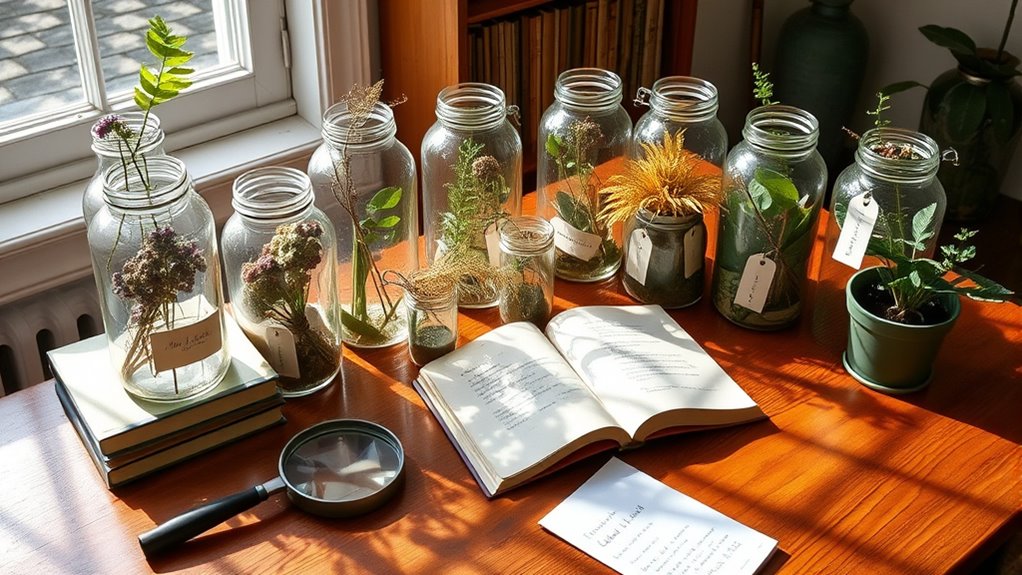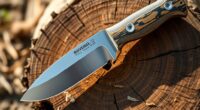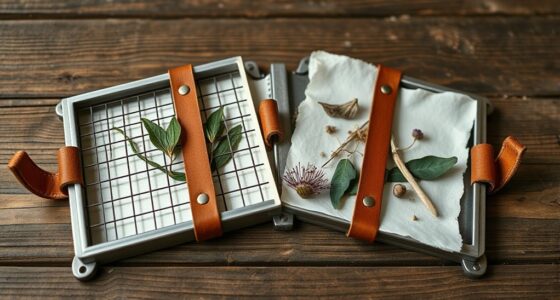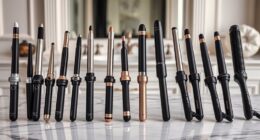To establish a home herbarium, start by selecting healthy plants with clear features, then carefully press and dry them using absorbent papers and proper tools. Organize your specimens on acid-free sheets, label each with detailed information like species, date, and location, and store everything in a safe, cool, dry place. Proper maintenance and organization guarantee your collection remains valuable and accessible. Keep exploring to discover more tips for building a lasting botanical reference.
Key Takeaways
- Select healthy, well-developed plant specimens and record detailed habitat and collection data for accurate identification.
- Properly press and dry plants flat between absorbent papers, changing papers regularly to prevent mold.
- Use high-quality archival materials and clearly label each herbarium sheet with essential information.
- Store specimens in a cool, dry, dark environment using acid-free folders or herbarium cabinets to ensure preservation.
- Organize and catalog your collection systematically, and consider digitizing for easy access and ongoing reference.
Selecting and Gathering Your Plant Specimens
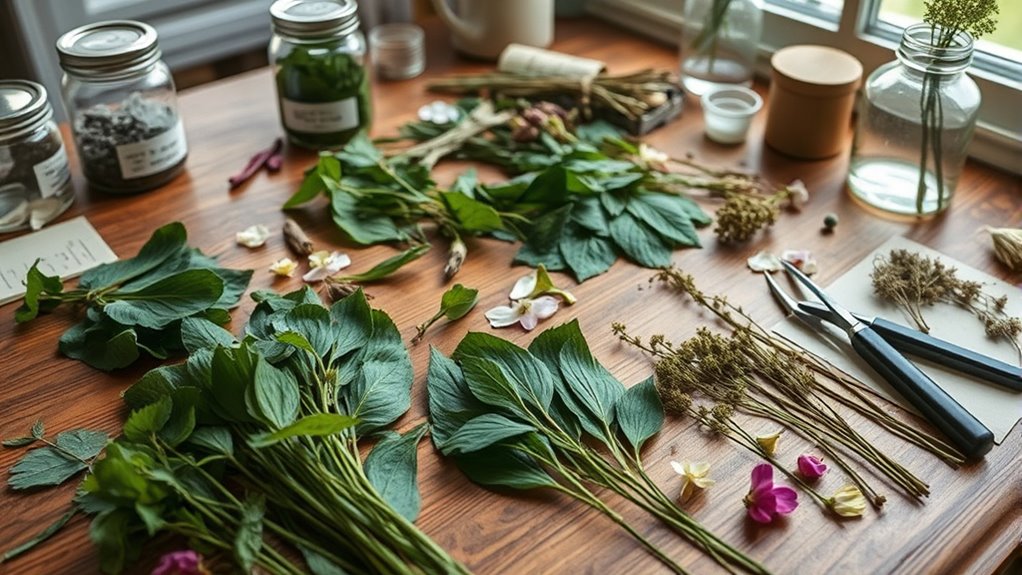
Before you begin collecting your plant specimens, it’s important to choose healthy, well-developed plants that clearly display their key features. This ensures accurate plant identification later on. Look for specimens with intact leaves, sturdy stems, and visible flowers or fruits, as these traits are essential for proper classification. When gathering plants, take note of their habitat documentation—record the environment, soil type, moisture levels, and nearby plants. This contextual information helps you understand each specimen’s ecological niche. Selecting representative, healthy specimens not only simplifies identification but also provides valuable data for your herbarium. Properly plant documentation is crucial for establishing a comprehensive and reliable collection. By carefully choosing and documenting your plants, you create a solid foundation for building an extensive and reliable collection.
Preparing and Pressing Your Plants
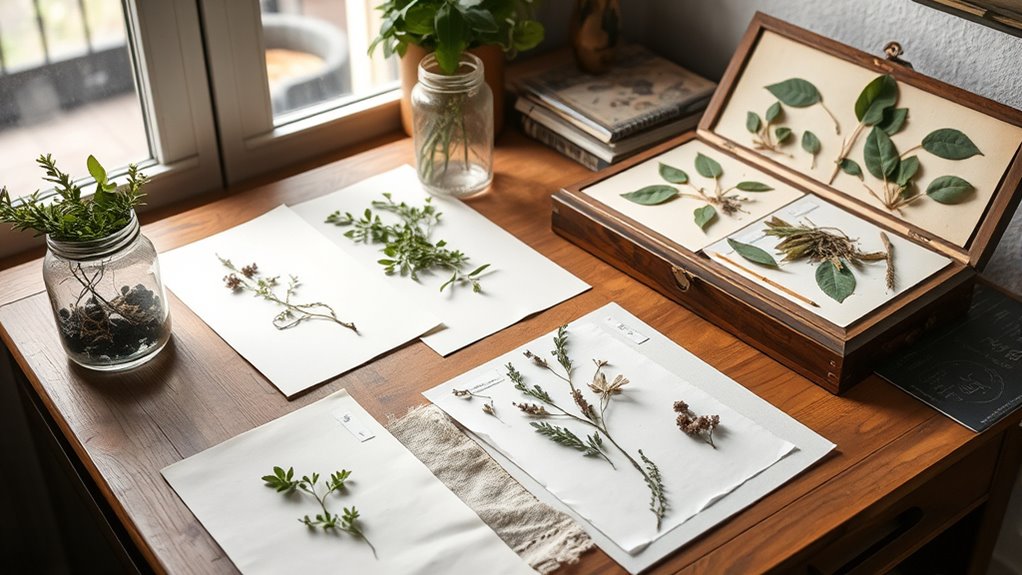
When preparing your plants for pressing, choose specimens that are healthy and free of damage. Use proper pressing techniques to guarantee your plants dry flat and retain their shape. With careful selection and correct pressing methods, your herbarium will look professional and last for years. Additionally, incorporating quality tools can improve the efficiency and effectiveness of your pressing process.
Selecting Suitable Plants
Choosing the right plants is essential for creating a successful herbarium, as not all specimens press and preserve well. When selecting plants, focus on healthy, undamaged specimens with clear features. Consider plant selection carefully, prioritizing species that are easy to press and maintain their shape. Habitat considerations are also important; choose plants from accessible environments that won’t be difficult to gather without harming the ecosystem. Avoid plants with thick, woody stems or milky sap, as these are more challenging to press properly. Select a variety of plants, including leaves, flowers, and stems, to create a well-rounded collection. Proper plant preparation and pressing techniques are key to ensuring your specimens remain durable and visually appealing. By choosing suitable plants based on these factors, you’ll ensure your herbarium is durable, informative, and visually appealing.
Proper Pressing Techniques
To guarantee your plants are properly preserved, start by preparing them carefully for pressing. Begin with accurate plant identification to ensure you press the correct specimens. Gently clean off dirt and insects, handling fragile parts carefully. Use appropriate pressing equipment, such as plant presses or homemade alternatives like heavy books, to apply consistent pressure. Arrange the plant specimen flat, spreading out leaves, stems, and flowers to prevent overlapping and ensure clear display of features. Place the plant between sheets of absorbent paper, like newsprint or blotting paper, to aid drying. Change the paper regularly to prevent mold and ensure thorough preservation. Proper pressing techniques help maintain the plant’s shape, color, and details, making your herbarium a valuable reference for future identification and study. Additionally, choosing the right pressing materials can enhance preservation quality.
Creating Durable and Organized Herbarium Sheets

To guarantee your herbarium sheets last, you need to use proper pressing techniques and high-quality archival materials. Label each specimen clearly and store your sheets in a safe, organized manner. These steps keep your collection durable and easy to navigate over time. Incorporating archival-quality materials can further ensure long-term preservation of your specimens.
Proper Pressing Techniques
Proper pressing techniques are essential for creating durable and well-organized herbarium sheets. You should start by understanding plant anatomy to guarantee you press each specimen correctly, preserving key features. Use the right pressing equipment, such as a plant press with adjustable straps, to apply even pressure. Place the plant specimen between sheets of absorbent paper, making sure it’s flat and spread out to show important details. Change the papers regularly to prevent mold and assure proper drying. Keep in mind that uniform pressure helps maintain the plant’s shape and prevents curling or cracking. Consistency in your pressing method results in specimens that stay intact over time and are easy to study. Mastering these techniques ensures your herbarium remains organized and durable for reference. Proper drying and storage are also crucial steps to avoid mold and deterioration over time.
Using Archival Materials
Using archival materials is essential for preserving your herbarium sheets over time. These materials prevent deterioration and keep specimens organized. Use acid-free storage boxes and folders to avoid chemical reactions that can damage plant presses. Archival quality mounting supplies, like acid-free glue and backing papers, ensure your specimens stay secure without harming them. To visualize, consider this table:
| Material Type | Purpose | Benefits |
|---|---|---|
| Acid-free mounting paper | Attach specimens securely | Prevents acid damage |
| Archival storage boxes | Protects sheets from light and dust | Long-term preservation |
| Acid-free glue | Fixes specimens without deterioration | Safe for plant material |
| Polyester sleeves | Organizes and protects individual sheets | Easy handling and viewing |
Choose these materials to keep your herbarium durable and organized for years to come. Additionally, selecting proper labeling techniques ensures your specimens are well-documented and easily identified over time.
Labeling and Storage
Once your specimens are securely mounted with archival materials, clear labeling becomes essential for maintaining an organized herbarium. Labels should include the plant’s scientific name, collection date, location, and collector’s name to aid in plant identification. Use waterproof ink to guarantee labels stay legible over time. Proper storage involves keeping sheets flat in acid-free folders or herbarium cabinets, protecting them from light, moisture, and pests. To streamline organization, consider digital cataloging by photographing each sheet and recording its details in an electronic database. Digital records enhance plant identification efforts and make it easier to locate specimens quickly. Consistent labeling and careful storage create a durable, accessible herbarium that serves as a reliable reference for your botanical studies.
Labeling and Documenting Your Collections
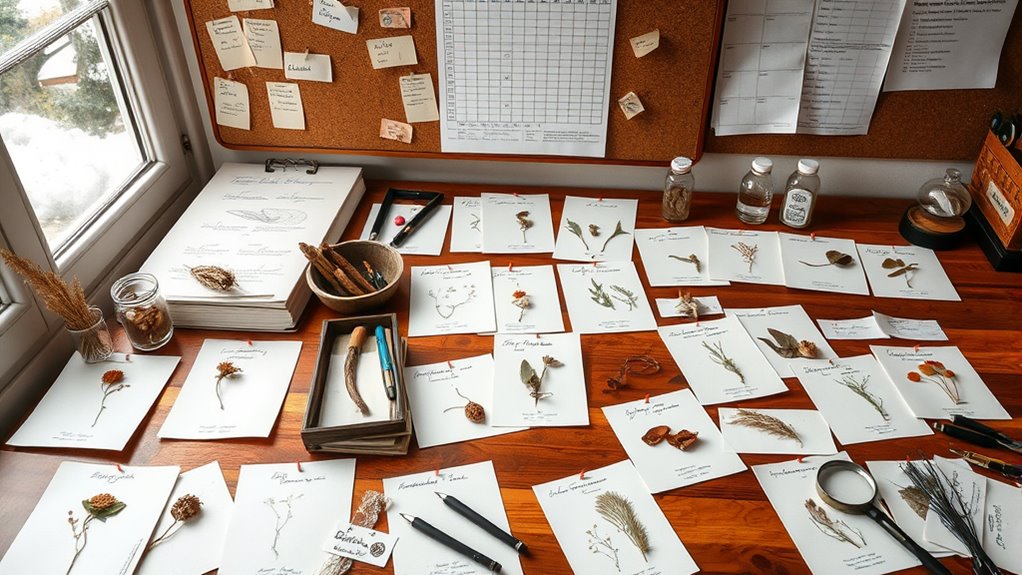
To keep your herbarium organized and useful, it’s essential to label each specimen accurately and document key details. Proper labeling helps with plant identification and guarantees you can revisit your collection later. Consider these steps:
- Include essential info like species name, collection date, and location on each label.
- Record additional data such as habitat, plant height, and flowering period for reference.
- Use digital cataloging tools to create a searchable database, making plant identification faster and easier.
- Regularly update your records to reflect new findings or changes in your specimens, ensuring your shower organization remains current and reliable.
Preserving and Storing Your Herbarium

Proper preservation and storage are essential to maintaining the integrity of your herbarium specimens. To do herbarium preservation effectively, focus on plant drying techniques that prevent mold and decay. Store your dried specimens in acid-free folders or paper to avoid deterioration. Keep your collection in a cool, dry, and dark place to prevent fading and insect damage. Use the table below to guide your storage options:
| Method | Benefits | Best For |
|---|---|---|
| Flat storage | Easy access, prevents damage | Small, delicate specimens |
| Herbarium presses | Maintains shape and color | Pressed plants |
| Airtight containers | Protects from pests | Long-term storage |
| Acid-free folders | Preserves specimen quality | General preservation |
| Climate-controlled | Prevents deterioration | Valuable collections |
This approach ensures your herbarium remains intact and ready for reference.
Maintaining and Expanding Your Reference Collection

Maintaining and expanding your reference collection requires regular updates and careful organization. To enhance plant identification and herbarium maintenance, consider these steps:
Regularly update and organize your herbarium for accurate plant identification.
- Review your collection periodically to identify gaps or outdated specimens, adding new samples as needed.
- Label each specimen clearly with detailed information like species name, collection date, and location to facilitate quick plant identification.
- Digitize your collection by photographing each specimen and creating a catalog, making it easier to track and expand your herbarium over time.
- Proper storage and handling are essential to prevent deterioration; using appropriate materials and environmental controls can extend the lifespan of your specimens. Proper storage techniques ensure your collection remains a reliable resource. Keep specimens properly stored to prevent deterioration, and continually seek new samples to broaden your reference material. This active approach improves plant identification skills and maintains herbarium quality.
Frequently Asked Questions
What Are the Best Tools for Plant Identification?
When you want to identify plants accurately, start with plant identification apps like iNaturalist or PlantSnap, which quickly give you possible matches. Pair these with botanical field guides for detailed descriptions and images. Using both tools together, you can confidently recognize different plant species, compare features, and expand your knowledge. These resources make plant identification easier and more enjoyable, especially when exploring new areas or building your herbarium collection.
How Often Should I Update or Add to My Herbarium?
Did you know that many hobbyists update their herbarium every season? You should add new specimens regularly, ideally with a seasonal collection to capture plant diversity throughout the year. Consider specimen rotation, removing less interesting or deteriorating samples to keep your collection fresh and manageable. Refreshing your herbarium every few months ensures it remains a vibrant, accurate reference, helping you track plant changes and seasonal variations effectively.
Can I Include Dried Flowers and Fruits in My Collection?
You can definitely include dried flowers and fruits in your collection. Use proper dried flower preservation techniques to keep their shape and color intact. For fruits, consider fruit specimen mounting to display their unique features while preventing decay. Handle each carefully to avoid damage, and make sure they are thoroughly dried before adding them to your herbarium. This way, your collection remains vibrant and well-preserved over time.
How Do I Prevent Pests From Damaging My Specimens?
To prevent pests from damaging your specimens, you should use pest-resistant storage options like airtight containers or sealed drawers. Incorporate natural deterrent methods by adding dried lavender, cedar chips, or neem leaves, which pests dislike. Regularly inspect your collection and keep the storage area clean and dry. These steps help protect your herbarium, ensuring your dried flowers and fruits stay in good condition.
What Are Eco-Friendly Methods for Preserving Plant Samples?
Imagine your plant samples as delicate treasures needing gentle hands. You can practice eco-friendly preservation by using sustainable drying techniques like air drying in well-ventilated spaces or sun drying naturally. These methods conserve resources and avoid harmful chemicals, keeping your specimens pristine. Embrace eco-conscious choices that nurture both your collection and the planet, turning your herbarium into a affirmation of sustainable care and lasting beauty.
Conclusion
As you continue to nurture your herbarium, you’ll find it’s like tending a quiet garden of knowledge—each specimen a tiny treasure waiting to share its story. With patience and care, your collection will become a gentle companion, inviting curiosity and wonder. Embrace the journey of discovery, knowing that every pressed leaf and carefully labeled detail adds a touch of magic to your botanical world. Enjoy every moment of this rewarding, calming hobby.

